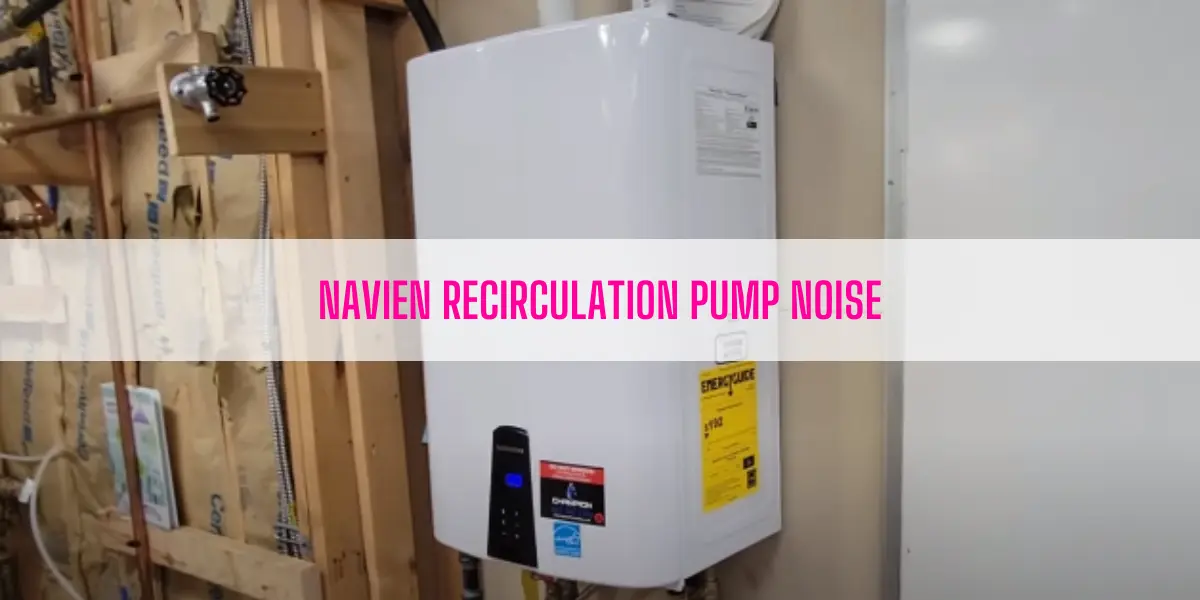Navien Recirculation Pump Noise
Some sort of noise out of your Navien recirculation pump is normal. However, if it generates annoying or buzzing noise, there is something wrong with the system.
Generally, your Navien recirculation pump will produce a humming noise because of the wrong size primary loop, not purging the recirculation pump, or foreign materials getting into the pump.
Below, I will break down everything to stop the buzzing noise. So, keep reading till the end.
Table of Contents
Navien Recirculation Pump Noise [4 Easy Solutions]
This chapter will reveal all the possible culprits that cause the recirculation pump of your Navien to make a humming noise.
01. Wrong Size Primary Loop
The recirculation pump will make a squeaking noise if the installer fails to install the primary loop correctly. For example, if you get the tees backward, the recirculation pump will not function properly.
Similarly, if the return from the loops is mixing with the boiler loop system and cooling off the water before it gets sent to the recirculation pump, you will face this problem. To understand this problem what I am talking about, you can watch this video:
How To Fix:
First off, I recommend you check the primary loop. Don’t hesitate to switch the tees around if you get them backward. Also, make sure you get the 1-½” pipe for the horizontal manifold, which will help even out the flow of the recirculators. But it will be best if you contact a certified plumber to fix this issue.
02. You May Forget to Purge The Recirculation Pump
Your Navien Recirculation Pump will make a humming noise like a refrigerator if you don’t bleed the air out of the recirculation system. So, ensure you purge the air out of the recirculation pump to operate the unit quietly.
How To Fix:
It’s a piece of cake to bleed the air out of your Navien recirculation pump. Just locate the air bleeder valve on top of the recirculation system. From the valve, try to loosen up the cap to remove air from the system. Then, tighten up the cap again once you remove all the air from the loop.
03. Not Mounted The Pump Securely or Isolate It
Buzzing noise out of the recirculation pump will be general if you or your plumber don’t mount the pump securely. Most importantly, the installer fails to mount the pump on the vibration isolators.
How To Fix:
Ensure you mount the pump securely. Turns out, make sure you isolate the recirculation pump from the vibration. You can isolate the pump from the vibration in two ways.
First, place a ½” thick rubber between the pump and anything it will be mounted on. Second, you can use a flex connector to isolate the pump. So, get 2 braided ss flex connectors and install them on the inlet and the outlet of the pump.
04. Foreign Materials In The Pump
Foreign materials like small pebbles may get into the recirculation pump. As a result, the stuff will rub against the wall of the pump and produce a hum like a refrigerator when you turn the unit on.
How To Fix:
I recommend you disassemble the recirculation pump from the unit and inspect it carefully for foreign materials. If yes, clean them. On the other hand, if you find no foreign stuff, ensure you purge the air out of the system.
End-Note
I broke down all the possible reasons that cause your Navien Recirculation Pump to produce a humming noise. If you fail to stop the noise after trying all the steps I mentioned, I bet there is a complex problem with the unit. So, hire a professional to deal with the issue.
Another suggestion I can give you is to maintain and service your Navien water heater according to the manual. It will help you avoid common water heater issues and let you operate the unit smoothly.
Read Also:

Eric Alvarez is the head of content on LilDutchUncle.Com. He is an HVAC guy based in El Paso, Texas, United States. He obtained his Bachelor of Science degree from the University Of Texas at El Paso. Years of experience in the HVAC field have taught him many lessons, not the least of which is that the value of quality and knowledge far exceeds any promised initial savings. He has a good standing reputation for superior skills in heating, air conditioning, hot water tanks, and indoor air quality systems.




![Rinnai Tankless Water Heater Beeping [9 Easy Solutions]](https://lildutchuncle.com/wp-content/uploads/2022/09/Rinnai-Tankless-Water-Heater-Beeping-768x384.webp)



